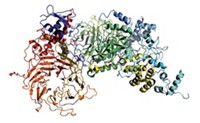Advertisement
Grab your lab coat. Let's get started
Welcome!
Welcome!
Create an account below to get 6 C&EN articles per month, receive newsletters and more - all free.
It seems this is your first time logging in online. Please enter the following information to continue.
As an ACS member you automatically get access to this site. All we need is few more details to create your reading experience.
Not you? Sign in with a different account.
Not you? Sign in with a different account.
ERROR 1
ERROR 1
ERROR 2
ERROR 2
ERROR 2
ERROR 2
ERROR 2
Password and Confirm password must match.
If you have an ACS member number, please enter it here so we can link this account to your membership. (optional)
ERROR 2
ACS values your privacy. By submitting your information, you are gaining access to C&EN and subscribing to our weekly newsletter. We use the information you provide to make your reading experience better, and we will never sell your data to third party members.
Biological Chemistry
Directed evolution reprograms botulinum neurotoxins
Proteases target new substrates with high specificity
by Celia Henry Arnaud
February 20, 2021
| A version of this story appeared in
Volume 99, Issue 6
Proteases are enzymes that cleave other proteins at defined locations. Such enzymes are attractive as therapeutics, but reprogramming them to selectively target a specific substrate is challenging. The natural substrates of botulinum neurotoxin (BoNT) proteases, including the enzyme marketed as Botox, are proteins involved in the formation and release of vesicles in neurons. These enzymes are examples of clinically used proteases that researchers have attempted to repurpose with varying degrees of success. Now researchers have used directed evolution to successfully repurpose enzymes in this class, potentially opening a route to develop new anticancer drugs. David R. Liu of Broad Institute of MIT and Harvard and the Howard Hughes Medical Institute, Min Dong of Harvard Medical School, and coworkers have now used a directed evolution method called phage-assisted continuous evolution (PACE) to reprogram the specificity of BoNT proteases so they target proteins other than their natural substrates (Science 2021, DOI: 10.1126/science.abf5972). The researchers used both positive and negative selection PACE to evolve BoNT proteases that selectively target desired substrates. They evolved three distinct classes of BoNT proteases into variants that selectively cleave each of four protein targets chosen by the researchers, including phosphatase and tensin homolog, a signaling protein that is mutated in many cancers and is unrelated to any known native targets of natural BoNT proteases.





Join the conversation
Contact the reporter
Submit a Letter to the Editor for publication
Engage with us on Twitter